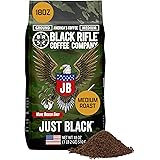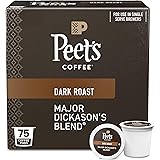Mastering Your Morning Brew: The Ultimate DIY Iced Coffee Recipe at Home
There’s nothing quite like that first sip of perfectly crafted iced coffee. Yet, for many of us, the daily trip to the coffee shop can quickly become an expensive habit, draining our wallets faster than we can say “extra shot.” If you’ve found yourself wishing for a way to replicate that café experience right in your own kitchen, saving money and customizing every detail, you’re in the right place. The video above offers a fantastic starting point for creating your own delicious iced coffee at home, and we’re here to dive even deeper into making your homemade brew truly spectacular.
Making your own iced coffee is not just about saving money; it’s about gaining control over ingredients, flavor, and even the environmental impact of your daily ritual. Whether you’re following a specific dietary plan like keto, aiming to reduce sugar, or simply love experimenting with flavors, a DIY iced coffee recipe allows for endless possibilities. You can tailor every component, from the coffee roast to the type of sweetener and creamer, ensuring each cup is exactly how you like it, every single time.
The Foundation of Flavor: Brewing Your Coffee for Iced Perfection
One of the most crucial steps to an incredible homemade iced coffee is how you prepare your coffee base. As highlighted in the video, brewing your coffee at night and allowing it to cool completely is a game-changer. This method prevents the dreaded watered-down taste that often plagues iced coffee made with freshly brewed, hot coffee poured directly over ice. By starting with a chilled coffee concentrate, you preserve the full, rich flavor and aroma of your beans, resulting in a more satisfying and robust drink.
The French press, a favorite method for many, including Rachelle in the video, is an excellent tool for making your iced coffee base. Its immersion brewing process allows coffee grounds to steep fully in hot water, extracting a deep, complex flavor profile. When using a French press, a good rule of thumb, as mentioned, is around three tablespoons of medium roast coffee grounds per serving. Experiment with your preferred coffee-to-water ratio to find your ideal strength, remembering that a slightly stronger brew can stand up better to ice and added ingredients.
Beyond the French press, you could also explore a true cold brew method, which involves steeping coffee grounds in cold water for an extended period, typically 12-24 hours. While the video suggests heating the water first for a superior taste, cold brewing does offer an incredibly smooth, low-acid concentrate that many people adore for iced coffee. For those who prefer a more caffeinated kick, opting for a medium or even lighter roast coffee can actually provide more caffeine than a dark roast, contrary to popular belief, as the longer roasting process can burn off some of the caffeine content.
Sweetness & Sustainability: Crafting Your Signature Iced Coffee
Once your coffee is perfectly chilled, it’s time to add the magic: sweetness and creaminess. The video brilliantly demonstrates how personal this step is, especially when catering to specific dietary needs. Sugar-free syrups, like those from Torani or Stevia-sweetened options from brands like Sebastianos, offer fantastic ways to enjoy a sweet treat without the added sugar. Torani, in particular, offers a vast array of flavors—from classic vanilla and caramel to more adventurous options—providing approximately 30-40 different varieties in some stores, allowing for endless customization.
Regarding sweetness levels, Rachelle’s preference for four pumps of syrup serves as a great starting point, but this is entirely up to your individual taste buds. Some might prefer just one or two pumps for a subtle hint of flavor, while others might go for more for a truly decadent drink. Don’t be afraid to experiment to find your ideal balance. Moreover, embracing reusable cups, like the affordable Starbucks branded ones or simply washing and reusing disposable iced coffee cups, is a simple yet impactful way to contribute to environmental sustainability. This practice not only reduces waste but, as delightfully pointed out in the video, can also make your homemade creation feel even more like a special coffee shop treat.
When it comes to building your iced coffee, adding ice first, filling the cup about halfway, is a smart move. This ensures your chilled coffee has plenty of frosty companions without immediately diluting your carefully brewed base. Then, pouring your cold coffee over the ice before adding other ingredients allows everything to blend more smoothly. This layered approach helps integrate all the flavors evenly, preventing a watery, unevenly mixed beverage.
Creamy Perfection: Choosing Your Iced Coffee Creamer
The creamer is where you can truly dial in the richness and texture of your iced coffee. For those on a keto diet, heavy whipping cream is an excellent choice, providing a luxurious, full-bodied texture without added sugars or carbs. Its high-fat content also contributes to a satisfying mouthfeel that complements the robust coffee flavor beautifully. However, the world of creamers extends far beyond, offering options to suit every taste and dietary preference.
Before adopting a keto lifestyle, many enjoyed traditional choices like half-and-half, which provides a classic creamy texture and taste. Plant-based milk alternatives such as almond milk, oat milk, or soy milk are also fantastic options for those who prefer dairy-free or lighter alternatives. These can add a subtle nutty or earthy flavor, depending on your choice, and many brands offer unsweetened versions, giving you full control over the sweetness profile of your drink. If you do opt for pre-sweetened creamers, be mindful of their sugar content, especially if you’re trying to reduce your sugar intake.
While convenient, some popular sweetened creamers can contain a long list of ingredients that might not appeal to everyone looking for a more natural approach. By using an unsweetened creamer and adding your own sugar-free or regular syrup, you maintain complete oversight of what goes into your cup. This DIY approach not only ensures you’re happy with the taste but also allows you to make informed choices about your daily consumption, aligning your coffee ritual with your broader health and wellness goals.
Beyond the Basics: Customization and Creativity for Your Homemade Iced Coffee
The beauty of a DIY iced coffee recipe lies in its boundless potential for customization. Once you’ve mastered the basic technique, the possibilities for flavor combinations are limited only by your imagination. Rachelle’s love for salted caramel Torani is a perfect example of how specific flavor preferences can elevate your daily brew. Think about white chocolate, hazelnut, peppermint, or even seasonal flavors like pumpkin spice – all readily available in syrup form, sugar-free or regular.
Consider experimenting with different coffee roasts beyond the medium roast. A lighter roast might offer more floral or fruity notes, while a dark roast could provide a bolder, richer base. You could also explore adding a dash of spice, like cinnamon or nutmeg, directly into your coffee grounds before brewing for an aromatic kick. For an extra touch of decadence, a drizzle of chocolate or caramel sauce inside your cup before pouring can create a beautiful visual effect and an extra layer of flavor that rivals any café creation.
Ultimately, making your own homemade iced coffee is a rewarding journey that combines practicality with pleasure. It’s significantly more affordable than purchasing a daily specialty drink, giving you substantial savings over time. Moreover, it empowers you to control the quality of ingredients, ensuring your drink meets your personal standards for taste and health. So go ahead, brew a batch tonight, and wake up to the delicious promise of your very own, perfectly customized DIY iced coffee.







